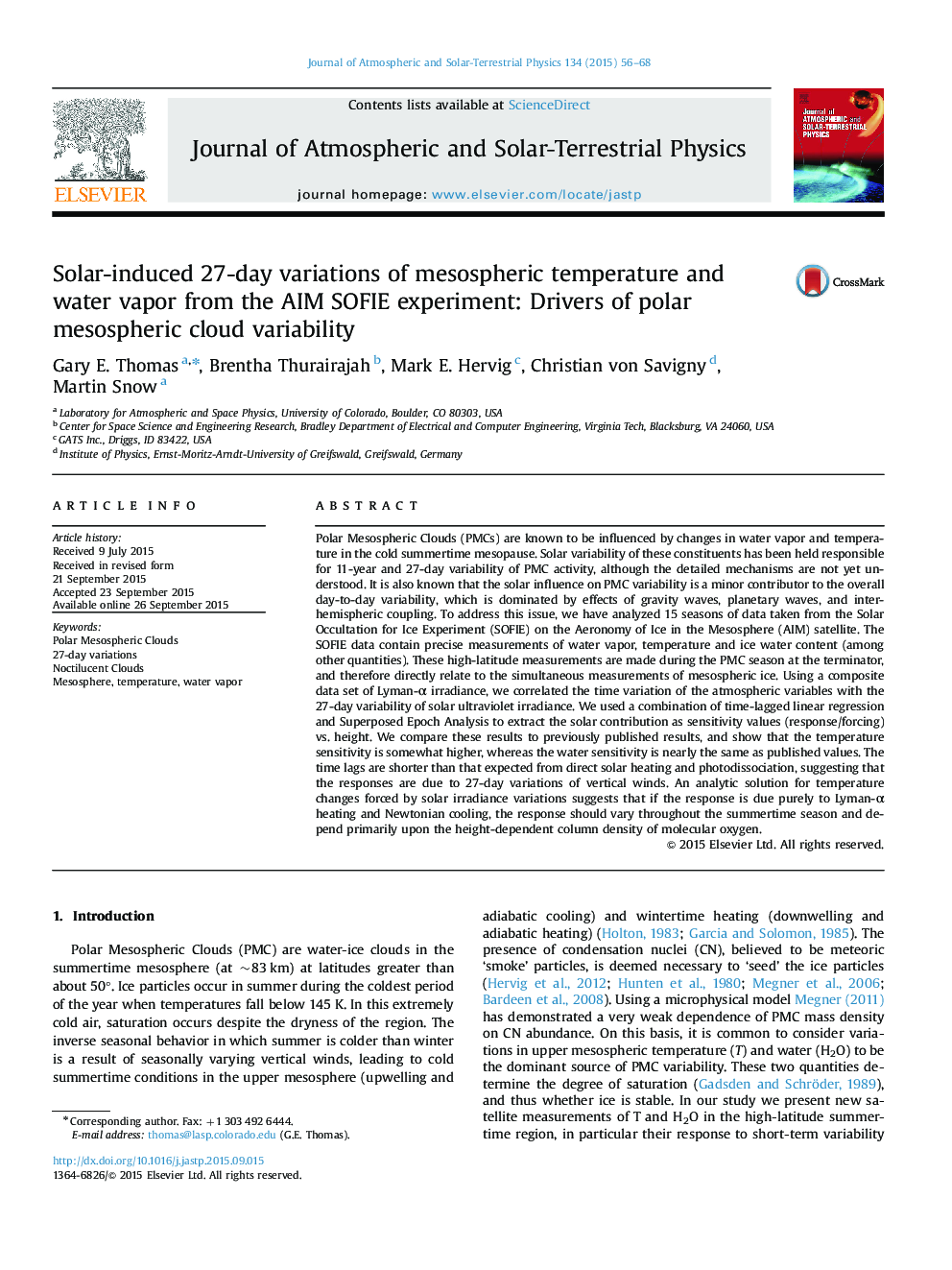| Article ID | Journal | Published Year | Pages | File Type |
|---|---|---|---|---|
| 1776365 | Journal of Atmospheric and Solar-Terrestrial Physics | 2015 | 13 Pages |
Abstract
Polar Mesospheric Clouds (PMCs) are known to be influenced by changes in water vapor and temperature in the cold summertime mesopause. Solar variability of these constituents has been held responsible for 11-year and 27-day variability of PMC activity, although the detailed mechanisms are not yet understood. It is also known that the solar influence on PMC variability is a minor contributor to the overall day-to-day variability, which is dominated by effects of gravity waves, planetary waves, and inter-hemispheric coupling. To address this issue, we have analyzed 15 seasons of data taken from the Solar Occultation for Ice Experiment (SOFIE) on the Aeronomy of Ice in the Mesosphere (AIM) satellite. The SOFIE data contain precise measurements of water vapor, temperature and ice water content (among other quantities). These high-latitude measurements are made during the PMC season at the terminator, and therefore directly relate to the simultaneous measurements of mesospheric ice. Using a composite data set of Lyman-α irradiance, we correlated the time variation of the atmospheric variables with the 27-day variability of solar ultraviolet irradiance. We used a combination of time-lagged linear regression and Superposed Epoch Analysis to extract the solar contribution as sensitivity values (response/forcing) vs. height. We compare these results to previously published results, and show that the temperature sensitivity is somewhat higher, whereas the water sensitivity is nearly the same as published values. The time lags are shorter than that expected from direct solar heating and photodissociation, suggesting that the responses are due to 27-day variations of vertical winds. An analytic solution for temperature changes forced by solar irradiance variations suggests that if the response is due purely to Lyman-α heating and Newtonian cooling, the response should vary throughout the summertime season and depend primarily upon the height-dependent column density of molecular oxygen.
Related Topics
Physical Sciences and Engineering
Earth and Planetary Sciences
Geophysics
Authors
Gary E. Thomas, Brentha Thurairajah, Mark E. Hervig, Christian von Savigny, Martin Snow,
